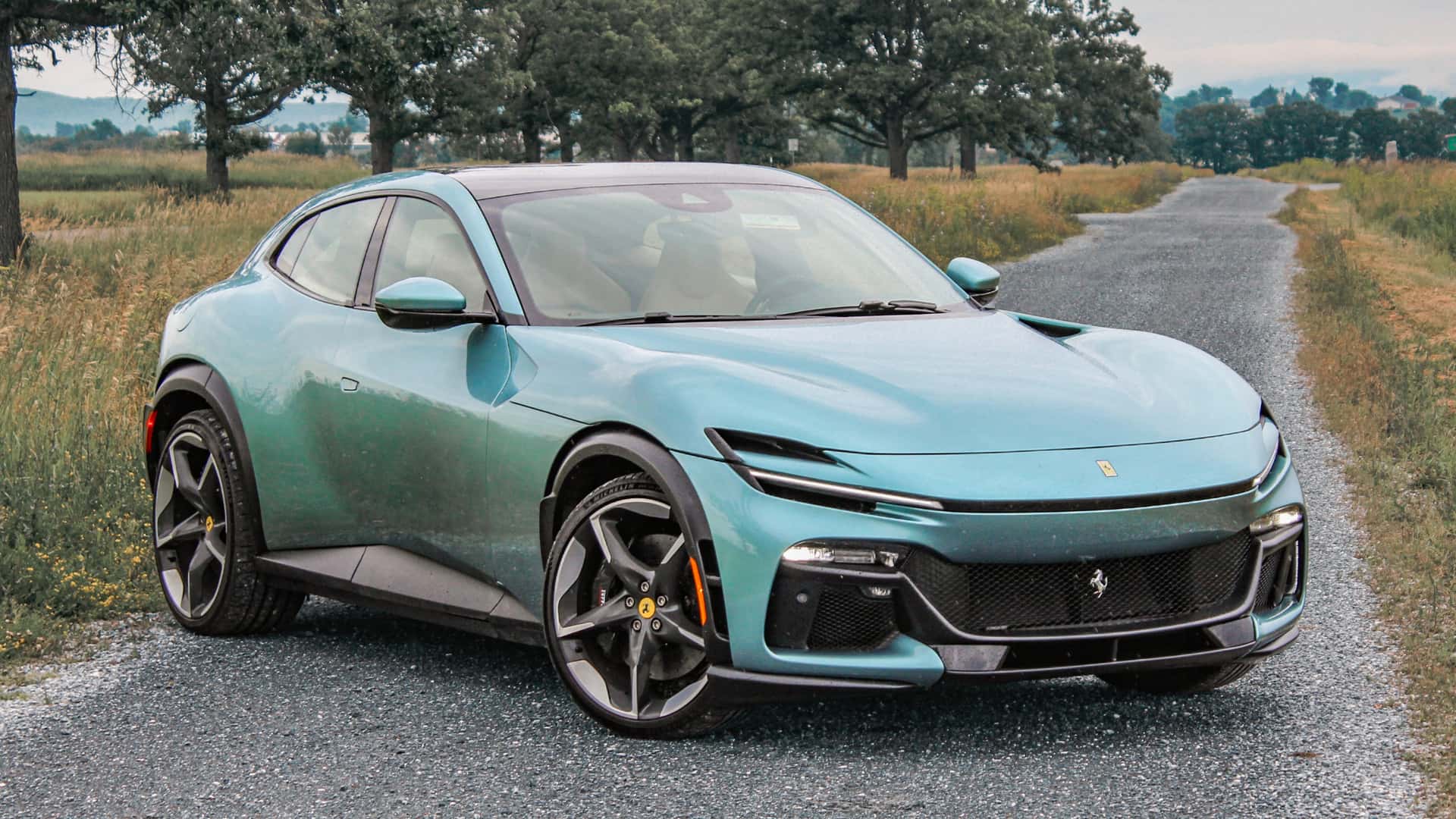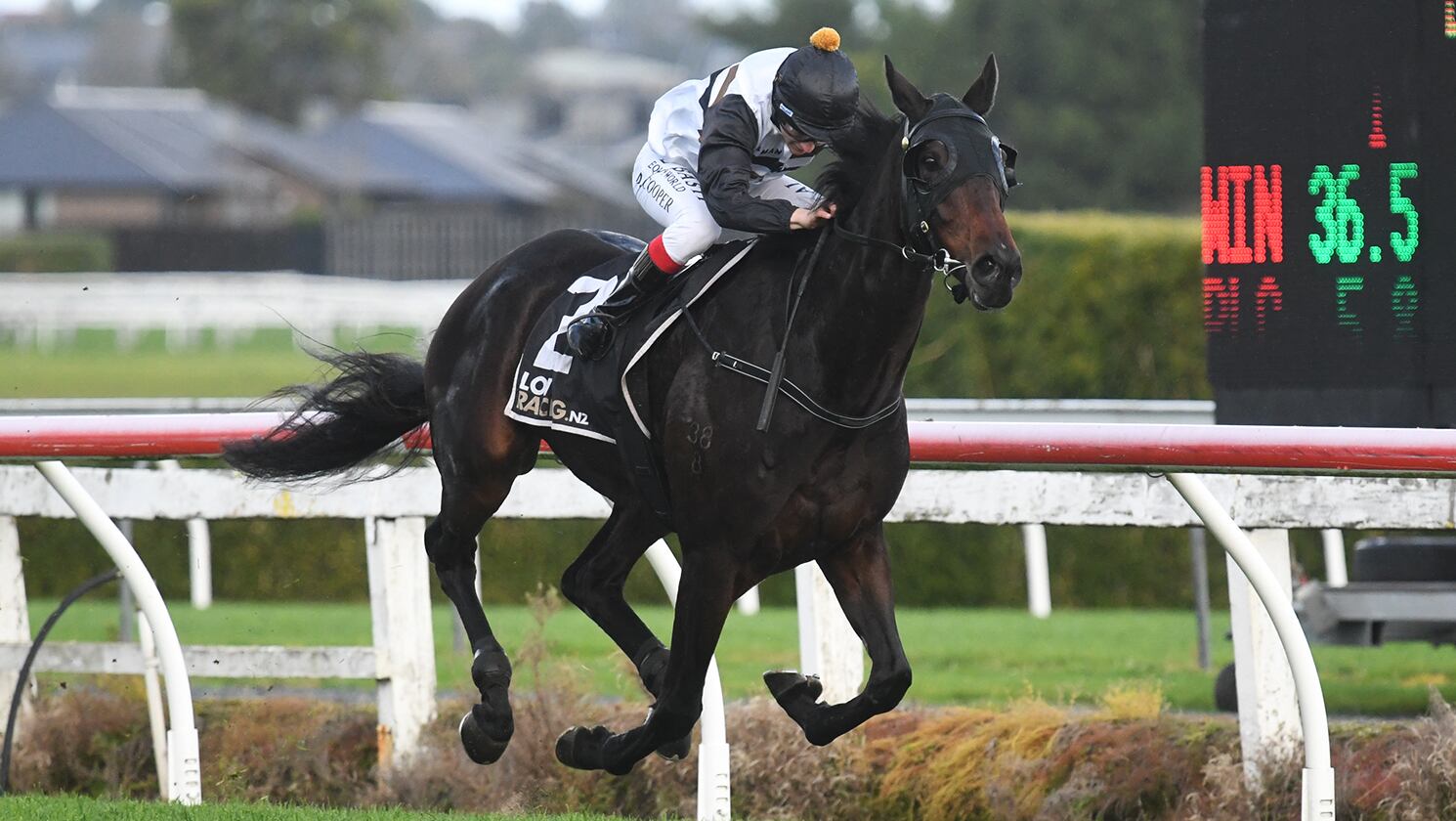
FERRARI PUROSANGUE: THE MOST FUN SUV EVER
Don’t be fooled by its shape. The Purosangue sounds and handles like no other four-door on sale. For half a million, it better.
The Purosangue is Ferrari’s first SUV. That means it has to play the part of a useful all-rounder and competent daily driver better than any other Ferrari before it. With a roomy four-seat cabin, four doors, a real trunk, and reasonable ground clearance, things look promising.
What better way to test the world’s most practical Ferrari than a road trip, three days of relaxed cruising and back road carving through New England? Starting on the pothole-riddled streets of New York City, we chucked our bags into the hatch and pointed the car’s long, shapely nose north.
| Quick Specs | 2025 Ferrari Purosangue |
| Engine | 6.5-Liter V-12 |
| Output | 715 Horsepower / 528 Pound-Feet |
| Transmission | Eight-Speed Dual-Clutch / Two-Speed Automatic |
| 0-60 MPH | 3.2 Seconds (est.) |
| Price / As Tested | $423,686 / $506,305 |
New York City’s streets offered ample opportunity to test the upper limits of the Purosangue’s trick suspension. Designed by Multimatic, the True Active Spool Valve (TASV) dampers use electric motors to control stroke and ride height. They work independently of each other, meaning there are no sway bars connecting the suspension’s left and right sides.
That means there's a huge delta between soft and hard suspension modes. In its softest setting the Purosangue remains taut and composed, not cushy. Bumps are communicated into the cabin, with bigger imperfections delivering audible impacts to the chassis. While the physical forces making it to my seat weren’t jarring, the relative lack of suspension travel and sound-deadening compared to other performance SUVs is a clear signifier: Ferrari still wants the Purosangue to feel like a sports car.
Here’s further proof: The Italian SUV comes standard on staggered wheels measuring 22 inches up front and 23 inches in the rear, with a 315-millimeter wide tire out back. This sort of equipment dismisses any notion the Purosangue could be used for off-pavement excursions. While there is a hill descent control feature, we suspect it’s meant to be paired with the "Ice" drive mode (there are no sand or rock modes on the steering wheel-mounted Manettino switch).
The Purosangue feels like a real Ferrari in many ways. Idling through city traffic offered an opportunity to fiddle with the four-door’s interior space. The infotainment is largely unchanged from the 296 GTB sports car, operated mostly via the digital gauge cluster screen and a touch-capacitive D-pad on the steering wheel. While there have been some small changes to the controls compared to the 296, the setup remains infuriating to use. Touch-capacitive buttons like these shouldn’t have a place in cars; They’re inconsistent and often need a delicate touch to function properly—tough to achieve when you’re also moving down a road.
Apple CarPlay is easy to activate, but because there’s no central infotainment screen, it’s displayed in the gauge cluster, shrouding vital information. When CarPlay is running, the Purosangue displays nothing but speed, gear position, and fuel level. You don’t even get a tachometer. This feels like an afterthought, except Ferrari’s been using this system for years now with seemingly no intention to change.
The climate controls are all new for the Purosangue, centered around a dash-mounted rotating dial with a touchscreen in the middle. It’s equally as fiddly to use as the touch-capacitive steering wheel controls. With enough time you can learn which buttons do what, but you shouldn’t have to re-learn how to adjust fan speed on a car this expensive.
Pros: Handles More Like A Sports Sedan Than a Crossover, V-12 Is Special, It Looks Like a Ferrari
Unlike the 296, the Purosangue has a touchscreen for the passenger that can control many of the entertainment and climate features. The easiest way to adjust things, I found, was to simply ask the person riding in the right seat. Thankfully there are still physical scroll wheels and rocker buttons on the steering wheel for volume control and track skipping, respectively.
When you’re not actively yelling at the controls, the cabin of the Purosangue is a nice place. The leather is soft, the trim looks and feels high-quality, and the seats are supportive and highly adjustable. There are available heating, cooling, and massaging functions, too. Yes, massaging seats in a Ferrari. Incredible.
All of the negatives about the Purosangue fade away once you get it on a good road. This car is in a class of its own. It's the best SUV-shaped vehicle I’ve ever driven, and it’s not even close. Its closest rivals aren’t crossovers, they’re four-door missiles like the Cadillac CT5-V Blackwing or the BMW M5 CS. While those cars are incredible, the Ferrari evokes more joy on a twisty tarmac two-lane.
Much of that is thanks to the V-12. Ferrari could’ve slapped its twin-turbo V-8 into the Purosangue’s nose, and Modena would’ve sold just as many cars. Its decision to keep the 12-cylinder is the main reason the Purosangue is so special. The engine’s immediate response, the crescendoing 8,250-rpm redline, the magnificent high-pitched shriek coming from the quad tips. These are things you won’t find anywhere else, aside from other Ferraris.
Another thing about having God’s own V-12 rather than a twin-turbo V-8: It means you have to work for your speed. The Purosangue weighs over 4,700 pounds, and peak torque from the 6.5-liter engine doesn’t arrive until very late in the rev range. The Purosangue is no X5 M Competition; you have to rev this thing out to feel the forward thrust. And the driving experience feels all the better for that because you get to hear the engine more often.
Through turns, the Purosangue is a revelation. Set that trick Multimatic suspension to Hard mode, and it locks down the dampers, eliminating much of the SUV’s body roll. Because the engine sits behind the front axle line and the main transmission (there are two) is a transaxle that sits out back, weight distribution is 49/51 front to rear—more in line with the greatest sports sedans than an SUV.
Cons: Enraging Touch-Capacitive Controls, Zero Off-Road Capabilities, No Rear Bench Seat Option
As a result, the Purosangue’s front end is surprisingly pointy. It’s no 812 Superfast, obviously, but there’s a lot of agility here for a car this size. The steering is remarkably light and tingly. The closest thing I can compare it to is a 296 or a Superfast. The standard carbon-ceramic brakes remind me of the 296, with their instant grab and relatively short pedal travel.
The eight-speed dual-clutch is as lightning-quick as it is in every other modern Ferrari, with giant column-mounted paddles that deliver satisfying clicks. The second transmission, a two-speed automatic unit mounted at the front of the engine, powers the front wheels. The ‘box is seamless in its delivery, feeding torque at up to 130 miles per hour. It gets power straight from the front of the crankshaft, but it never feels like too much is going frontward. Weird? Yes. Effective? Also yes.
The Michelin tires aren’t made from crazy-sticky track rubber either, which means you can reach their limits without having to go a billion miles per hour. Huck the Purosangue into a corner and you can induce real rotation. The rear-wheel steering, which feels a bit unnatural during normal driving conditions, feels zeroed-in and helpful here. Dump your right foot into the throttle and oversteer will appear on demand. That and the sound are all the proof I need that this is a real Ferrari.
With a starting price of $423,686 for 2025 and an as-tested price of $506,305 for the 2024 model shown here, it better be. Even if the average Purosangue buyer has three G-Wagens and a Lamborghini Urus sitting in their garage, an SUV of this caliber should be able to do everything easily for most people.
The infuriating interior controls and layout could be forgiven in a car like the 296, where the average owner is driving the car, at most, once a week. But in a car like the Purosangue, where utility and versatility encourage owners to use it every day, it’s simply not good enough. This could be the best-driving SUV on the planet—it very well might be—but without basic interior controls figured out, it’s tough to recommend. If you value driving over everything else in your four-door utility vehicle, though, there is no alternative. The Purosangue is it.
More on Ferrari's First Four-Door
- Noted Ferrari Critic Jay Leno Checks Out the Purosangue
- Ferrari Purosangue Versus Lamborghini Urus: It's Surprisingly Close
| 2025 Ferrari Purosangue | |
| Engine | 6.5-Liter V-12 |
| Output | 715 Horsepower / 528 Pound-Feet |
| Transmission | Eight-Speed Dual-Clutch / Two-Speed Automatic |
| Drive Type | All-Wheel Drive |
| Speed 0-60 MPH | 3.2 Seconds (est.) |
| Maximum speed | 192 Miles Per Hour |
| Weight | 4,784 Pounds |
| Efficiency | 11 City / 15 Highway / 12 Combined |
| Seating Capacity | 4 |
| Cargo Volume | 16.7 Cubic Feet |
| Base Price | $423,686 |
| As-Tested Price | $506,305 |
| On Sale | Now |
